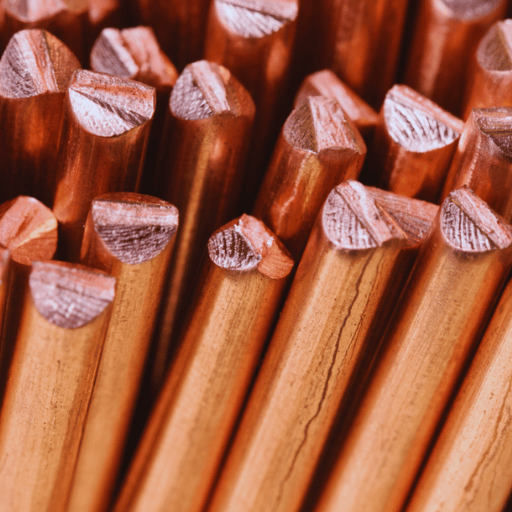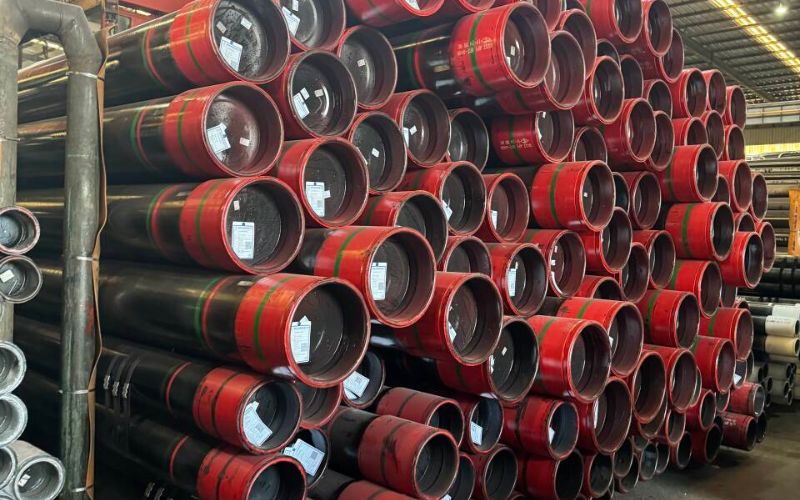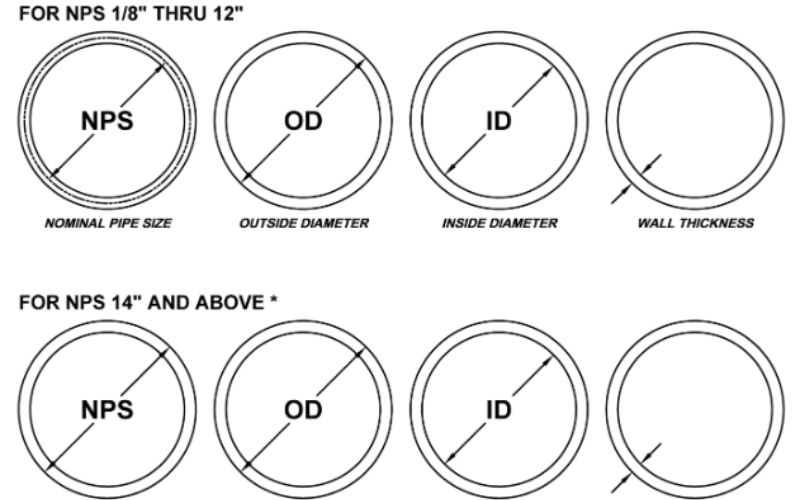Copper is one of the most versatile and indispensable metals for modern industry and society, as it is often used in copper alloys. Used extensively due to its excellent conductivity, durability, and recyclability, copper has been essential in developing technologies that power the world today. Copper is vital across various sectors such as electrical wiring, renewable energy systems, architecture, and medical systems. This article elaborates on the remarkable properties of copper, its numerous applications, and its role in building a sustainable world. Whether you are concerned with industrial applications or copper’s contribution to sustainable development, this article is a rich resource on versatile metals.
What Are the Different Types of Copper?

Copper can be divided into three types based on the intended use and level of purity.
- Pure Copper: This category contains high-grade copper, such as ETP and ECP, which is used in electrical wiring due to its excellent electroconductivity.
- Alloyed Copper: These are coppers amalgamated with other elements like brass, which is copper and zinc, or bronze, which is copper and tin, to improve durability, corrosion resistance, and other desirable attributes.
- Recycled Copper: Obtained from old products, recycled copper is highly functional and is extensively utilized in construction, manufacturing, and eco-friendly production initiatives.
As can be seen, each type serves a specific purpose, which makes copper priceless in different sectors.
Exploring Copper Alloy Varieties
Copper alloys are grouped according to their principal alloying constituents, mainly copper and nickel, and the alloy’s applications.
- Brass (Copper and Zinc): Noted for their excellent fabrication ability, resistance to corrosion, and aesthetic value. They are employed in plumbing works, devices, musical gadgets, and diverse architectural works.
- Bronze (Copper and Tin): Recognized for their high strength, ability to endure abrasion, and lesser friction capabilities. Commonly used for bearings and marine hardware, sculptures, and other gold, of which a principal constituent is copper.
- Copper-Nickel Alloys: They are the most resistant to corrosion by seawater and transmit heat well, making them useful in marine work and parts of desalination plants.
Meeting industrial needs using copper alloys for specific industrial requirements enables manufacturers to meet imposed needs with the proper copper alloy features necessary for specific industrial applications.
The Characteristics of Pure Copper
Pure copper is a ductile, malleable metal that can be effortlessly shaped into wires. It features unparalleled corrosion resistance, enabling its use in many environments for prolonged durations. As an energy source, pure copper is extensively utilized in electrical wiring, everyday electronics, and heat exchangers where unmatched conductivity is critical.
Understanding Native Copper
Native copper designates copper that does not come from ore and instead occurs in a natural metallic form. It is usually discovered in deposits around basaltic rocks and can take dendritic, nugget, or flaky forms that may be significantly massive. Due to Native copper’s malleability and conductivity, it was one of the first metals used by humans for decorative pieces and tools. Currently, native copper is a material that is valuable, rare, and often sought by collectors and researchers.
Understanding the Properties of Copper

The Physical Properties of Copper
Copper is a reddish-brown metal with remarkable electrical and thermal conductivity, which makes it a key component in several copper compounds. It has a density of 8.96 g/cm³ and a melting point of 1,085 °C (1,984 °F), which is convenient for several applications. Highly ductile and malleable, copper can be transformed into thin sheets or wires without losing strength. Its corrosion resistance protects it from the damaging effects of air due to the patina forming on its surface, improving the metal’s longevity. These attributes make copper a primary material in industrial appliances, plumbing, and electrical wiring.
Chemical Element: Copper on the Periodic Table
Technological advancements rely on copper due to its remarkable ability to conduct electricity and heat. Its wiring, transformers, and electric motors are used significantly in generating and transmitting power. Cooling conduits, electric buses and terminals, and some power electronics components also utilize copper. Solar panels and wind turbines also demand copper, making them other renewable energy sources. Its ability to conduct electricity makes it indispensable in these systems. Coupled with its use in medicine to control bacteria, these devices further copper’s utilization. The varying uses of copper showcase its significance in sustainable development and modern innovation.
The Role of Copper Ions and Oxides
Different chemical or industrial processes require copper ions and oxides as their essentials. The +1 and +2 oxidation states of copper ions are especially pivotal in catalysis, which supports chemical reactions in making chemicals and pharmaceuticals. Copper oxides are also used in circuits: cuprous oxide (Cu₂O) and cupric oxide (CuO) are popular semiconductors. Additionally, they are used as pigments in ceramics and components in antifouling paints. Their technological importance and usefulness in advanced materials and environmental technologies stem from their chemical properties and conductivity.
The History of Copper and Its Development

The History of Copper Through the Ages
Human use of copper can be traced back to 9000 B.C.E., where tools and jewelry were found in the Indus Valley, Mesopotamian, and Egyptian civilizations. Users recognized copper’s value long before the known smelting process was invented around 5000 B.C.E. This advanced the creation of copper metal tools and weaponry by purifying the metal. During the Bronze Age (3300-1200 B.C.E.), copper was further advanced after being alloyed with tin to produce bronze, which enhanced material technology in the civilization. During the Industrial Revolution, copper and bronze maintained their importance for wires, machines, and buildings, and improved productivity. In modern times, copper is valuable in industry due to the element’s conductivity, malleability, and the ability to kill germs.
Key Milestones in Copper Development Association
- Formation of the Association (1960s): The Copper Development Association (CDA) was formed explicitly for industry advocacy purposes to enhance the development and utilization of copper and its alloys.
- Standardization Efforts: All Copper Development Association (CDA) members pay special attention to developing all necessary standards about the quality and technical features of copper and copper alloys.
- Innovation in Applications: By supporting research and innovations, the association has made significant advancements in copper in electrical systems, building materials for green construction, and antimicrobial products.
- Sustainability Initiatives: In recent decades, copper’s sustained benefits have escalated, and the CDA has worked to promote these as copper’s recyclability and environmental impact increase, inherently aiding the global resource warfare goal.
- Educational Outreach: CDA members are well-trained in modern tools and techniques and are exposed to materials that help them deepen their understanding of the emerging technologies where copper is widely used. Thus, the CDA actively and continuously endeavors to provide these valuable resources.
Copper Production in Copper Mine History
From its inception in civilizations like Egypt and Mesoamerica, copper has played a strategic role in human history, primarily used in tools, ornaments, and preliminary construction. During this period, basic mining equipment extracted and refined copper-containing minerals. Like many other parameters during the Industrial Revolution, mining technology was also improved, enabling large-scale production, which is still widely used today. Modern mining practices utilize open pit and underground mining methodologies for further purifying processes like smelting and refining, which are essential in the industrial and commercial spheres. Regarding mining and electrical thermal work, copper regionally remains a vital resource, and its demand is correlated to the region’s growth.
What Are the Applications of Copper?

How Copper Wire is Used for Electrical Needs
The excellent reliability and conductivity of copper wire make it invaluable for electricity production. It is used in the primary power transmission and distribution systems as it allows electricity to be transported over long distances efficiently and easily. Copper wires also help provide the electrical wiring of buildings, wherein they aid in connecting switches, outlets, and fixtures. Furthermore, electrical devices like transformers, motors, and connectors are manufactured with copper because its properties outlast those of the competition due to its durability and performance. Because of all these absurd factors, copper wire is essential to modern technology and infrastructure.
Exploring Copper Tubing and Sheets
Industries use copper tubing and copper sheets because of their excellent conductivity, flexibility, corrosion resistance, and other factors. Copper tubing is commonly used in plumbing, HVAC systems, and refrigeration. Copper sheets are used in construction, engraving, decorative purposes, and roofing. Copper sheets offer gold-like strength and exquisite beauty while retaining excellent craftsmanship. Tubing’s resistance to corrosion allows for efficient transport of water, gases, and refrigerants. Copper sheets provide consistent performance, allowing them to withstand environmental exposure and protecting delicate projects from the elements.
Industries that Widely Use Copper Products
Copper products are widely used in various sectors because of their strength, the easy flow of electric current, and the different things they can be used for. Some sectors are:
- Electrical and Electronics Industry: Copper is a basic need for the wiring of motors and transformers because it conducts electricity at a high level.
- Construction Industry: Copper is also used in piping, roofing, and cladding because of its strength and resistance to corrosion.
- Automotive Industry: It is also essential in wiring systems, parts of electric vehicles, and in heat exchangers.
- Manufacturing Industry: It is found in many parts of machines and industrial devices used for basic work because it efficiently conducts heat or electricity.
How Does Copper Use Impact Architecture?

The Role of Solid Copper in Modern Design
Due to its aesthetic appeal, versatility, and durability, solid copper is a widely used material in contemporary architectural design. Solid copper is often used for interior accents, as well as façades and roofing. Its distinct appearance changes over time as it develops a natural patina. In addition to its visual characteristics, copper’s excellent thermal and acoustic properties enhance building energy efficiency and sound management. Copper’s long-lasting nature also makes it sustainable since it is recyclable and aligns with environmentally friendly construction practices, also known as green building.
Copper Surfaces and Their Aesthetic Appeal
Copper surfaces boast of an unrivaled and classic beauty. Not only do they possess warm, metallic colors, but they also acquire distinctive patinas over time, thus making them appealing for both modern and traditional architectural designs. As a result of this natural aging process, copper can change into striking hues from rich brown to vibrant greens. As copper is very versatile, it is popular for cladding, countertops, and even as decorative accents for interior and exterior purposes.
Architectural Advantages of Using Copper
Due to its extensive endurance, corrosion resistance, malleability, and ductility, copper benefits architectural structures. Its natural durability guarantees the structure’s integrity for decades with minimal upkeep. The lightweight nature of the material facilitates its use in roofing, facades, and gutters, among other applications. Moreover, copper is environmentally friendly because it is 100% recyclable without losing material properties. Its patina improves copper’s aesthetic appeal while providing protection and reducing the need for chemical treatments, prolonging its lifespan. As a result, copper becomes an effective and dependable material for use in architecture, both for ornamentation and utility.
Frequently Asked Questions (FAQs)
Q: What is copper, and what are its fundamental properties?
A: Copper, the twenty-ninth chemical element in the periodic table, is well known for its conductivity, malleability, and corrosion resistance. These properties make copper a vital metal in various sectors of industry.
Q: How is copper commonly used in architecture?
A: Armor and Roofing profusely utilizes copper in architecture because of its lightweight. It is used extensively for roofing, cladding, and striking offsetting architectural details such as copper pendant light fittings.
Q: What are some common types of copper and its alloys?
A: Copper and its alloys are pure copper and bronze, which comprises copper and tin, and brass, which is copper and zinc. Beryllium copper and copper-nickel alloys are also standard because of their unique benefits.
Q: What is the role of copper in electrical applications?
A: Copper enhances the efficiency of electrical systems through its elements. Copper and its alloys are well-known and considered essential components for electrical wiring, copper rotor motors, and numerous other auxiliary apparatuses.
Q: What processes are involved in removing copper from its ore?
A: Copper is harvested from copper ore through diverse processes, including mining, concentration, smelting, and refining. The most commonly used ores are copper sulfide, copper oxide, and copper sulfate compounds.
Q: What are copper’s environmentally friendly features?
A: The possibility of recycling copper solves the problem of obtaining new copper ore, as obsolete copper does not need to be mined, which reduces mining-related pollution. Thus, it is a sustainable source of copper. Its use in numerous devices also helps trim energy expenditures and conserve energy.
Q: Where can we find copper in its raw form?
A: In nature, copper can be made of natural copper or minerals like chalcopyrite, malachite, and azurite. It can be found scattered in ore deposits throughout the globe.
Q: Why do we need copper touch surfaces?
A: Healthcare facilities and most public areas have copper and its alloys-touch surfaces, which have targeted antimicrobial effects against bacteria and viruses. These surfaces reduce the transfer of bacteria and viruses.
Q: What is the purpose of the International Copper Association?
A: The International Copper Association undertakes research and advocates for copper’s economic and ecological benefits to promote its use.
Q: What is the difference between an alloy of copper and zinc and pure copper?
A: Copper and zinc alloy, or brass, is stronger than pure copper and exhibits better corrosion resistance. It is therefore used in environments where durability, beauty, and strength are highly sought.




